Note4Students
From UPSC perspective, the following things are important :
Prelims level: Westminster system
Mains level: principles of parliamentary democracy and the importance of an effective opposition.
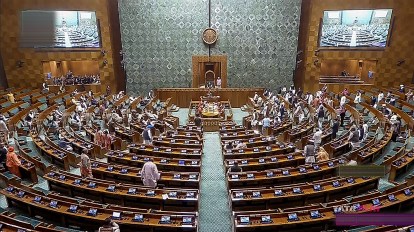
Central Idea:
The article reflects on the recent security breach in the Indian Parliament, drawing attention to the historical debate around the choice of a parliamentary government for India. It explores the importance of having a stable government with effective opposition, emphasizing the parliamentary system’s capacity to accommodate diversity. The author questions the handling of the security breach incident and the subsequent suspension of a significant number of opposition members.
Key Highlights:
- Security lapse in the Indian Parliament in December 2023.
- Historical debate on the choice of a parliamentary government in India.
- Importance of stable government with effective opposition.
- Challenges faced by the ruling party in accommodating opposition.
- Critique of the current leadership’s response to the security breach.
Key Challenges:
- Grappling with the aftermath of a significant security breach.
- Balancing the need for a stable government with the necessity of an effective opposition.
- Managing the paradox of majority endorsement while ensuring constant validation for the common good.
- Ensuring parliamentary committees address security concerns adequately.
- Striking a balance between executive authority and parliamentary dignity.
Key Terms:
- Parliamentary government
- Opposition
- Security breach
- Westminster system
- Presidential system
- Swarajist model
- Indian orthodoxy
- Common good
- Effective representation
- Stability in governance
Key Phrases:
- “Foundational institution of public life.”
- “Parliamentary form of government.”
- “Security lapses and pandemonium.”
- “Doctrinal, ethnic, and cultural pluralisms.”
- “Dialectics of stable support and effective opposition.”
- “Insistent demand of the Opposition.”
- “Suspended members from both Houses.”
- “Ruling party’s ability to defend its course.”
Key Quotes:
- “A parliamentary system marks a better space for minorities.”
- “The ruling party has not found it easy to face a sustained Opposition.”
- “It is not the truth that a ruling dispensation upholds that serves its claim to rule but its ability to defend the course it pursues as the truth.”
Anecdotes:
- Incident involving Jawaharlal Nehru and Speaker Mavalankar’s refusal to go to the Prime Minister’s chamber.
- Reference to historical debates within the Constituent Assembly on the form of government for India.
Key Statements:
- “The security breach is a breach inflicted on the nation as a whole.”
- “The ruling party, despite challenges, has to live with the logic of the parliamentary system.”
- “The suspension of almost the entire Opposition from both the Houses can hardly meet the test of becoming the voice of the nation.”
Key Examples and References:
- Two young men with gas canisters causing pandemonium in the Lok Sabha.
- Historical references to arguments for the presidential, Indian orthodox, and swarajist models.
- Mention of Jawaharlal Nehru’s sensitivity to the absence of an effective opposition.
Key Facts and Data:
- December 2023: Security breach in the Indian Parliament.
- Suspension of 146 members from both Houses.
- Reference to the historical debate within the Constituent Assembly.
Critical Analysis:
The article critically evaluates the current state of the Indian Parliament, questioning the handling of the security breach and the subsequent suspension of opposition members. It emphasizes the importance of a stable government with an effective opposition, highlighting historical debates on the choice of a parliamentary system. The author critiques the leadership’s response and underscores the need for a balance between executive authority and parliamentary dignity.
Way Forward:
- Address the security concerns through parliamentary committees.
- Foster a more collaborative approach between the ruling party and the opposition.
- Uphold the principles of parliamentary democracy and the importance of an effective opposition.
- Prioritize transparency and communication in addressing lapses and challenges.
- Reaffirm the commitment to diversity, pluralism, and the common good in parliamentary governance.
Get an IAS/IPS ranker as your 1: 1 personal mentor for UPSC 2024
Attend Now
Note4Students
From UPSC perspective, the following things are important :
Prelims level: Section 92 of the Rights of Persons with Disabilities Act, 2016
Mains level: need for a more robust and enforceable framework within the Model Code of Conduct
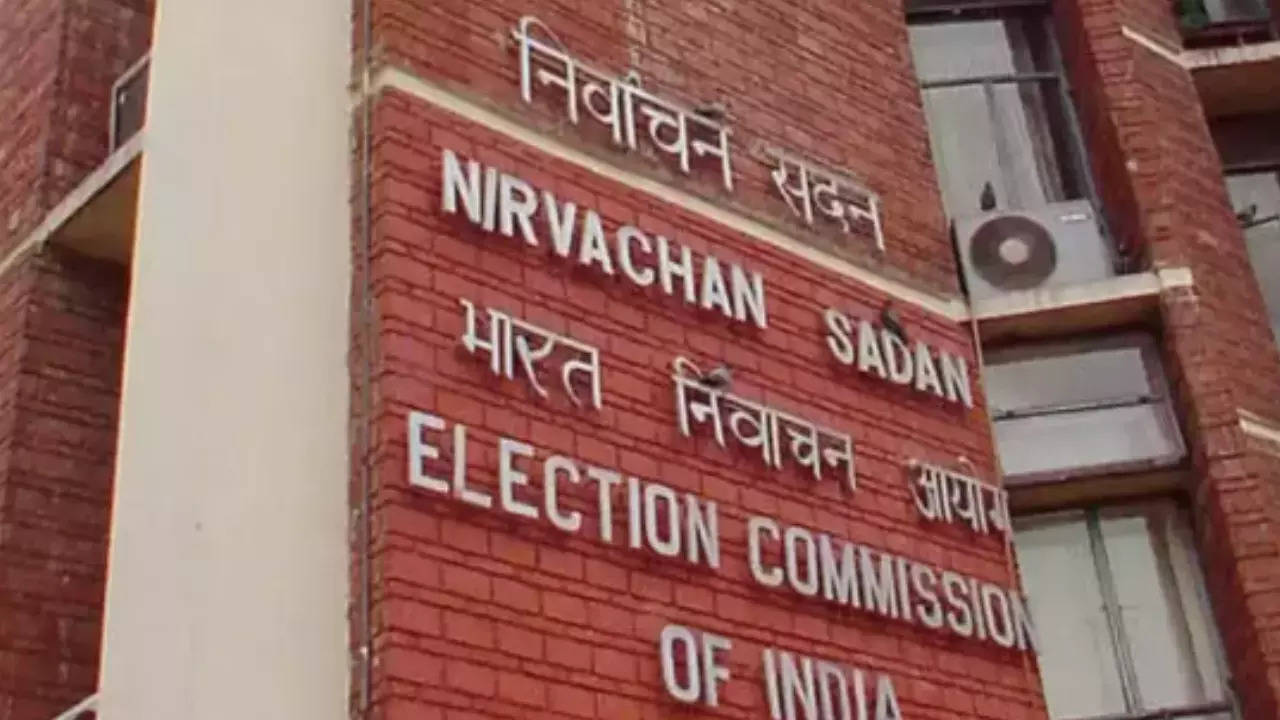
Central Idea:
The Election Commission of India issued guidelines advising political parties on using disability-sensitive language and practices. These guidelines cover inclusive communication, accessible information, and integrating people with disabilities (PwDs) within party structures. The aim is to counter derogatory remarks and stereotypes against PwDs in politics. However, concerns about the effectiveness of these guidelines arise, demanding further refinement and their inclusion in the Model Code of Conduct.
Key Highlights:
- The guidelines address disability-inclusive communication, information accessibility, and inclusion within political party frameworks.
- Recent derogatory remarks by political leaders underscore the necessity for these guidelines.
- Derogatory language contributes to attitudinal barriers under the Rights of Persons with Disabilities Act, 2016.
- The guidelines are advisory, lacking uniformity and needing a more definitive mandate.
- Absence of these guidelines in the Model Code of Conduct reduces their enforceability.
- Ambiguities in language usage and terminology require clarification to avoid misinterpretation.
- Political inclusion of PwDs is not addressed in the draft National Policy for PwD.
- Lack of data on legislators with disabilities and the absence of a disability column in election forms hinder political inclusion.
Key Terms:
- Disability-sensitive language
- Inclusive communication
- Attitudinal barriers
- Rights of Persons with Disabilities Act, 2016
- Model Code of Conduct
- Derogatory remarks
- National Policy for Persons with Disabilities
- Political inclusion
Key Phrases:
- “Advisory guidelines”
- “Attitudinal barrier”
- “Model Code of Conduct”
- “Political inclusion”
- “Derogatory remarks”
- “Rights of Persons with Disabilities Act, 2016”
- “National Policy for Persons with Disabilities”
Key Quotes:
- “These guidelines are only an ‘advisory,’ though the phraseology of a few guidelines is in mandatory language.”
- “Instances have underlined the need for these guidelines, such as derogatory remarks by political leaders.”
- “Political inclusion is an ignored aspect within the Indian realm of disability.”
Key Statements:
- “A uniform mandate under all three heads is needed for effective implementation.”
- “Guidelines must be included within the Model Code of Conduct to enhance their enforceability.”
- “The lack of data has contributed significantly to the political exclusion of PwDs.”
Key Examples and References:
- A Raja’s derogatory comparison of Sanatan Dharma to people with leprosy and HIV in September 2023.
- Lack of a disability column in nomination forms and affidavits filed by contestants during elections.
Key Facts:
- The guidelines cover disability-inclusive communication, information accessibility, and inclusion within party frameworks.
- Section 92 of the Rights of Persons with Disabilities Act, 2016, is mentioned as a punitive measure for breaching guidelines related to disability-inclusive communication.
Critical Analysis:
The article critically examines the advisory guidelines, highlighting their strengths, weaknesses, and areas for improvement. It emphasizes the need for a more robust and enforceable framework within the Model Code of Conduct and addresses ambiguities in language usage.
Way Forward:
- Refine and make the guidelines mandatory under all three categories.
- Incorporate guidelines into the Model Code of Conduct for enhanced enforceability.
- Provide a detailed list of disability-sensitive words and phraseology.
- Include a chapter on political inclusion in the National Policy for Persons with Disabilities.
- Introduce a disability column in election nomination forms to collect data on legislators with disabilities.
Get an IAS/IPS ranker as your 1: 1 personal mentor for UPSC 2024
Attend Now
Note4Students
From UPSC perspective, the following things are important :
Prelims level: Na
Mains level: Historical evolution of the purdah system in various parts of the world, including India
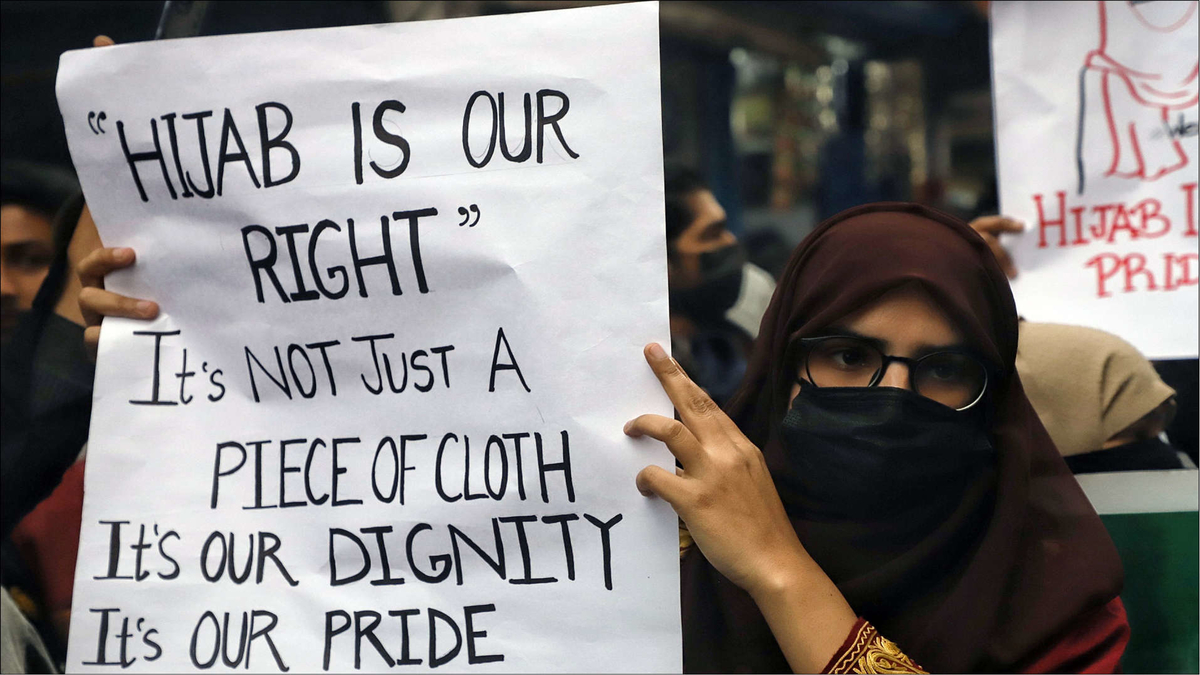
Central Idea:
The article focus into the ongoing discourse around the hijab/veil, examining recent political events in India and the global conversation on the subject. It raises questions about the right of Muslim women to choose their attire, the role of the state in regulating religious clothing, and the intersection of Islamic principles with government policies. The central argument posits that criticisms of the hijab often lack genuine concern for gender equality, being influenced by historical Western colonial biases, and mirroring the majoritarian agenda of Hindutva.
Key Highlights:
- Karnataka Chief Minister’s stance on the hijab issue is presented as a case of vote bank politics by the Congress, reinforcing BJP’s accusations.
- The global debate involves Western leaders advocating for bans, while Muslim women protest against enforced veiling in countries like Iran.
- The article questions the Western perception of Islam’s treatment of women, attributing bias to a colonial mindset.
Key Challenges:
- Balancing individual freedom of choice with state regulations on religious attire.
- Navigating the intersection between Islamic provisions and state policies.
- Addressing the influence of Western colonial perceptions on the discourse around Muslim women’s rights.
Key Terms:
- Hijab/Veil: Islamic head covering worn by some Muslim women.
- Hindutva: Ideology advocating the cultural and political dominance of Hindus in India.
- Vote Bank Politics: Political strategy to gain support from specific religious or ethnic groups.
- Colonial Mindset: Biased perspectives influenced by historical colonial experiences.
Key Phrases:
- “Vote bank politics” – Refers to the alleged manipulation of Muslim sentiments for political gain.
- “Western colonial project” – Describes historical biases influencing perceptions of Islam.
- “Gender freedom” – The concept of freedom regarding gender roles and choices.
Key Quotes:
- “For Europe, Islam was a lasting trauma.” – Edward Said, highlighting the historical impact of colonialism on Western perceptions of Islam.
- “There is no inherent value placed on man and woman…no pre-ordained system of hierarchy.” – Amina Wudud, on interpreting Islamic provisions for gender equality.
Key Statements:
- The Congress government’s indecision on the hijab issue is portrayed as an example of vote bank politics.
- The author suggests a parallel between the Hindutva majoritarian agenda and Western colonial objectives in their disregard for equal rights.
Key Examples and References:
- French President Nicolas Sarkozy’s push for a total ban on the Islamic veil in 2010.
- British Prime Minister Boris Johnson’s controversial remarks on Muslim women wearing burqas in 2019.
- Examples of successful Muslim women in India, such as Parveen Babi and Zeenat Aman, who did not conform to hijab norms.
Key Facts and Data:
- Historical evolution of the purdah system in various parts of the world, including India.
- Instances of Western leaders advocating for bans on the Islamic veil.
Critical Analysis:
- The author critiques the perceived bias in Western views on Islam, attributing it to a colonial mindset.
- The alignment of Hindutva’s majoritarian ideology and Western colonial objectives is questioned.
- The article challenges the sincerity of concerns about gender equality by highlighting selective concerns based on political agendas.
Way Forward:
- Advocate for a nuanced understanding of cultural practices and religious choices.
- Encourage open dialogue between religious communities and policymakers to address concerns.
- Emphasize the importance of respecting individual choices while ensuring a balance with societal norms.
Get an IAS/IPS ranker as your 1: 1 personal mentor for UPSC 2024
Attend Now
Note4Students
From UPSC perspective, the following things are important :
Prelims level: National Rural Employment Guarantee Act
Mains level: Role of Vikalp Sangam in proposing alternative solutions

Central Idea:
The article discusses the pressing issues faced by India, including unemployment, social unrest, ecological degradation, and threats to democratic rights. It emphasizes the need for alternative approaches and policies to address these challenges and highlights a People’s Manifesto released by Vikalp Sangam, a platform representing various movements and organizations working towards positive change.
Key Highlights:
- The article outlines the multifaceted crises in India, such as unemployment, ecological collapse, and erosion of democratic rights.
- It introduces Vikalp Sangam, a national platform fostering alternative initiatives for a just, equitable, and sustainable India.
- The People’s Manifesto aims at the 2024 general election and advocates policy shifts in areas like the economy, decentralization, accountability, and social inclusion.
- Practical examples on the Vikalp Sangam website illustrate successful community-driven solutions to challenges like unemployment and rural development.
- The manifesto calls for economic reforms, curbing the black economy, and wealth redistribution through measures like basic income and pension for all workers.
- It addresses concerns about the increasing authoritarianism, calls for decentralization, and the need to protect institutions like the Election Commission and media from political interference.
Key Challenges:
- Resistance to policy changes from established political and economic interests.
- The need for widespread awareness and acceptance of alternative approaches.
- The challenge of implementing grassroots initiatives on a larger scale.
- Overcoming political polarization and ensuring bipartisan support for key manifesto points.
Key Terms/Phrases:
- Vikalp Sangam
- People’s Manifesto
- Alternative pathways
- National Rural Employment Guarantee Act
- Decentralization
- Black economy
- Basic income
- Environmental impact assessment
- Forest Rights Act
- Climate crisis
Key Quotes/Statements:
- “Hope lies in the many initiatives to resist the forces of destruction and to construct alternative pathways.”
- “The People’s Manifesto for a Just, Equitable and Sustainable India.”
- “In about a decade, Vikalp Sangam has convened over 30 physical assemblies, published 1,500 stories of positive change…”
- “The manifesto demands curbs on the enormous black economy, reduction in the ratio of highest and lowest salaries, greater wealth and inheritance taxation of the rich…”
- “The manifesto urges a national land and water policy that protects important ecological functions…”
Key Examples and References:
- Unemployment protests, Joshimath sinking, dam burst in Sikkim, and conflicts in Manipur.
- Vikalp Sangam’s website with stories of rural revival and positive change.
- Adivasi village, Mendha Lekha in Maharashtra, and Dalit women farmers in Telangana as examples of successful local initiatives.
- Residents’ associations in Bhuj town implementing local decision-making.
Key Facts/Data:
- 85 people’s movements and civil society organizations released the People’s Manifesto.
- Vikalp Sangam has convened over 30 physical assemblies and published 1,500 stories of positive change.
- The manifesto recommends reserving 6% of GDP for education and 3% for health.
- The Vikalp Sangam process compiled hundreds of practical examples of alternative approaches.
Critical Analysis:
- The article effectively outlines the challenges faced by India and the role of Vikalp Sangam in proposing alternative solutions.
- The manifesto covers a broad spectrum of issues, but the challenge lies in its implementation and acceptance by political authorities.
- The emphasis on community-led solutions and decentralized decision-making aligns with sustainable development principles.
- The article lacks a detailed analysis of potential opposition or criticism to the proposed manifesto.
Way Forward:
- Raise awareness and garner public support for the People’s Manifesto.
- Engage with policymakers and political leaders to incorporate key recommendations into their agendas.
- Strengthen grassroots movements and community-led initiatives.
- Foster collaborations between government, businesses, and civil society to address the highlighted issues.
- Continuously monitor and evaluate the progress of alternative approaches to ensure their effectiveness.
Get an IAS/IPS ranker as your 1: 1 personal mentor for UPSC 2024
Attend Now

Central Idea:
The article focus into Vidhu Vinod Chopra’s film, “12th Fail,” capturing the struggles of real-life IPS officer Manoj Kumar Sharma in the competitive UPSC examinations. It highlights the unexpected yet impactful body language of the lead actor, Vikrant Massey, and underscores the film’s exploration of conformity and authenticity in the civil services interview process.
Key Highlights:
- Portrayal of Manoj Kumar Sharma’s internal journey in the UPSC examinations.
- Emphasis on Vikrant Massey’s skill in conveying character emotions through body language.
- Crucial moments, including the character’s nervousness and a supportive letter from his girlfriend.
- Vidhu Vinod Chopra’s focus on the significance of staying honest and true to oneself in achieving success.
Key Challenges:
- Illustration of challenges faced by candidates in the competitive UPSC examination process.
- Pressure to conform to societal expectations during interviews.
- Realities of a low success rate and the potential absence of a happy ending for many candidates.
Key Terms:
- UPSC: Union Public Service Commission, responsible for civil service examinations in India.
- IPS: Indian Police Service.
- Body language: Non-verbal communication through gestures, postures, and facial expressions.
Key Phrases:
- “Internal journey”: Emphasizes the character’s emotional and psychological struggles.
- “Unfairness of the system”: Highlights challenges of conforming in the competitive examination process.
- “Without oxygen”: Metaphorically describes the character’s journey to success without significant support.
Key Quotes:
- “He has to win by not being himself, by not revealing too much of himself.”
- “When someone sees you for who you are, they also see you for who you want to be.”
- “The crucial thing about this film is to show that you can make it big while staying honest.”
Anecdotes:
- Manoj Kumar Sharma’s nervousness and struggle with formal attire on the day of the final interview.
- The pivotal moment when he reads a supportive letter from his girlfriend, providing strength to be true to himself.
Key Statements:
- “The real job, as is for most great acting, is internal.”
- “In a just society, the competitive UPSC process would be seen as cruel.”
Key Examples and References:
- Vikrant Massey’s portrayal of Manoj Kumar Sharma’s transformation through body language.
- Vidhu Vinod Chopra’s emphasis on honesty and integrity in the pursuit of success.
Critical Analysis:
The article critically examines societal pressures and challenges in the pursuit of government civil service jobs, advocating for authenticity in success.
Way Forward:
Encourages a shift in societal perspectives, promoting a more just and empathetic approach to the challenges faced by candidates in competitive exams, without sacrificing one’s true self.
Get an IAS/IPS ranker as your 1: 1 personal mentor for UPSC 2024
Attend Now
Note4Students
From UPSC perspective, the following things are important :
Prelims level: Ramacharitmanas
Mains level: need to revisit the Ramacharitmanas in its entirety to comprehend Lord Rama in all dimensions

Central Idea:
The article explores the evolving perceptions of Lord Rama in Hindu society, with a focus on the transformation of the invocation “Jai Shri Ram” and the upcoming consecration of the Ram Janmabhoomi temple. It emphasizes the need to revisit the Ramacharitmanas in its entirety to comprehend Lord Rama in all dimensions, especially his compassionate and childlike aspects.
Key Highlights:
- Lord Rama, as depicted by Tulsidas in the Ramacharitmanas, is seen as divine and the upholder of maryada, connoting righteous conduct.
- The aggressive tone of the current popular invocation, “Jai Shri Ram,” emerged in 1990 during the Rath Yatra led by Lal Krishna Advani for the construction of the Ram temple.
- The construction of the Ram Janmabhoomi temple is widely welcomed, symbolizing a correction of historical wrongs and a call for Hindu assertiveness.
Key Challenges:
- The shift in the invocation from traditional greetings like “Ram Ram” to the more militant “Jai Shri Ram” reflects a change in social thinking, raising concerns about sharpness in Hindu thought.
- The article notes that the infant form of Lord Rama is rarely invoked, highlighting a departure from Tulsidas’s portrayal in the Ramacharitmanas.
Key Terms:
- Maryada: Connotes righteous conduct, context-specific.
- Rath Yatra: A procession advocating the construction of the Ram temple.
- Ramlalla Virajman: The deity representing Lord Rama in the Ayodhya case.
- Samadhi: A memorial, in this context, referring to Gandhi’s resting place at Rajghat.
Key Phrases:
- “Jai Shri Ram”: Evolved from the Rath Yatra in 1990, emphasizing a militant tone for the Ram Janmabhoomi temple.
- “He Ram”: Uttered by Gandhi at the time of his assassination, reflecting a deep connection to Lord Rama.
Key Quotes:
- “It is evocative that his samadhi at Rajghat carries these words.” – Referring to the words “He Ram” on Gandhi’s memorial.
- “Recognising the entire creation as full of Siya and Rama, I make obeisance to them with joined palms.” – Tulsidas’s perspective on Lord Rama and Sita.
Key Examples and References:
- Lal Krishna Advani’s Rath Yatra in 1990.
- D.V. Paluskar’s rendering of the bhajan “Thumak chalat Ramachandra.”
- Gandhi’s utterance of “He Ram” at the time of his assassination.
Key Facts and Data:
- Lord Rama is widely perceived in his warrior mode, especially during the celebration of Dussehra.
- The consecration of the Ram Janmabhoomi temple is scheduled for January 22, 2024.
Critical Analysis:
The article critically examines the changing invocation from traditional greetings to the militant “Jai Shri Ram,” expressing concerns about the sharpness in Hindu thinking. It reflects on the evolution of societal perceptions of Lord Rama, emphasizing the need to embrace the diverse dimensions portrayed in the Ramacharitmanas.
Way Forward:
- Encourage a broader understanding of Lord Rama by revisiting the Ramacharitmanas in its entirety.
- Emphasize the compassionate and childlike aspects of Lord Rama, especially in the context of the upcoming temple consecration.
- Reflect on Gandhi’s Rama bhakti as a guiding principle, promoting tolerance and compassion in the celebration of religious milestones.
Get an IAS/IPS ranker as your 1: 1 personal mentor for UPSC 2024
Attend Now
Note4Students
From UPSC perspective, the following things are important :
Prelims level: Remission
Mains level: lack of transparency and unchecked discretion in the remission process
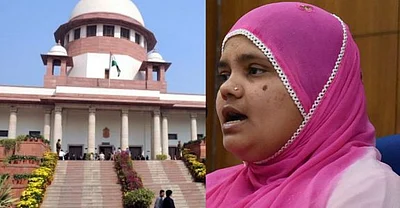
Central Idea:
The article discusses a recent Supreme Court decision regarding the remission of 11 convicts in the Bilkis Bano case. It highlights the court’s condemnation of illegalities and collusion between the petitioners and the Gujarat government. While celebrating the decision as a triumph for justice, the author also raises concerns about the lack of transparency and unchecked discretion in the remission process.
Key Highlights:
- The Supreme Court cancels remission orders for 11 convicts due to fraud and collusion with the Gujarat government.
- The decision is praised for upholding the rule of law and addressing the exceptional injustice faced by Bilkis Bano.
- The article acknowledges the inspiring resilience of Bilkis Bano and applauds women’s rights lawyers for their commitment.
Key Challenges:
- Lack of transparency in the formation and decision-making process of remission committees.
- Unchecked discretion and potential for arbitrary exercise of power in remission decisions.
- Concerns about non-application of mind and identical orders in the remission process, as seen in the Bilkis Bano case.
Key Terms:
- Remission: Reduction of sentence through earned days based on rehabilitation activities.
- Per incuriam: Declared as illegal due to a mistake or oversight.
- Retributive punishment: Focused on punishment rather than rehabilitation.
- Judicial review: Examination of a decision for legality and fairness.
- Usurpation of power: Unauthorized assumption of authority.
Key Phrases:
- “Injustice of exceptionalism”: Describes the grant of remission in the Bilkis Bano case as a unique and unjust situation.
- “Resilience that prevailed”: Commends Bilkis Bano’s enduring strength in the face of injustice.
- “Soothing balm”: Refers to the comfort provided by the Supreme Court’s firm decision.
- “Unchecked discretion”: Highlights the potential for arbitrary decision-making in remission cases.
Key Quotes:
- “Rule of law and equality before the law would be empty words if their violation is not a matter of judicial scrutiny.”
- “Remission is rooted in the logic that prisons are meant to be rehabilitative spaces.”
- “Justice Nagarathna’s words come as solace in light of the disturbing memory of the celebrations that followed the release of the 11 convicts.”
Key Examples and References:
- Bilkis Bano case: Illustrates the background of the Supreme Court decision and the injustices faced by the victim.
- Union of India vs V. Sriharan (2015): Reference to a Constitution Bench decision on the appropriate government for remission.
- Epuru Sudhakar vs State of Andhra Pradesh (2006): Supreme Court ruling on the judicial review of remission orders.
Key Facts and Data:
- Life convicts must serve a minimum of 14 years before applying for remission.
- Remission policies in some states deny opportunities based on crime categories.
- The Gujarat government’s remission orders for the 11 convicts were identical.
Critical Analysis:
The article raises concerns about the arbitrary exercise of power in remission decisions, citing the lack of transparency and identical orders in the Bilkis Bano case. It prompts a reflection on whether certain offenders should be ineligible for remission or if a focus on fair compliance with conditions is more appropriate.
Way Forward:
- Advocate for increased transparency in the formation and functioning of remission committees.
- Emphasize the importance of considering individual circumstances and compliance with remission conditions.
- Encourage a reevaluation of remission policies to avoid blanket denials based on crime categories.
- Address the issue of unchecked discretion to ensure a fair and rehabilitative approach in the remission process.
Get an IAS/IPS ranker as your 1: 1 personal mentor for UPSC 2024
Attend Now
Note4Students
From UPSC perspective, the following things are important :
Prelims level: Carbon Credit Trading System (CCTS)
Mains level: A concerning development for India is the European Union (EU)’s Carbon Border Adjustment Mechanism (CBAM).

Central Idea:
The European Union’s Carbon Border Adjustment Mechanism (CBAM) poses a significant challenge to India’s manufacturing sector. This policy aims to tax carbon-intensive imports into the EU, impacting key sectors like steel. India’s response involves considering legal challenges and negotiating with the EU while simultaneously developing its own carbon trading mechanisms.
Key Highlights:
- The CBAM is part of the EU’s strategy to achieve a 55% reduction in greenhouse gas emissions by 2030.
- It aims to be climate-neutral by 2050 – an economy with net-zero greenhouse gas emissions.
- India, a top exporter to the EU, is expected to be adversely affected, particularly in sectors like steel.
- India is developing its own Carbon Credit Trading System (CCTS) to combat climate change and incentivize clean energy investments.
Key Challenges:
- India faces the challenge of protecting its industries from the potential negative impacts of CBAM.
- Limited time to formulate and implement effective carbon taxation measures aligning with the Paris Agreement.
- The EU’s failure to consider factors like cheap labor and alternative production modes influencing industry shifts.
Key Terms:
- Carbon Border Adjustment Mechanism (CBAM)
- Greenhouse Gas (GHG) emissions
- Carbon Credit Trading System (CCTS)
- Paris Agreement
- Special and Differential Treatment provisions
Key Phrases:
- “Ill-conceived move” – Referring to the Commerce and Industry Minister’s criticism of the CBAM.
- “Death knell for India’s manufacturing sector” – Describing the potential impact of the carbon tax on Indian industries.
- “Common but differentiated responsibilities” – Principle agreed upon under the Paris Agreement.
- “Carbon leakage” – The risk of carbon-intensive production moving from the EU to countries with lax environmental regulations.
Key Quotes:
- “Proposed carbon tax on imports is an ill-conceived move… death knell for India’s manufacturing sector.” – Commerce and Industry Minister.
- “India has challenged the CBAM before the World Trade Organization under the special and differential treatment provisions.”
Key Statements:
- The CBAM is seen as a threat to India’s manufacturing sector and competitiveness in the EU market.
- India is working on its own carbon trading mechanisms, including the CCTS and the Green Credit Programme Rules.
Key Examples and References:
- UK’s plan to enforce its own CBAM by 2027, adding to the challenges faced by India’s exports.
Key Facts:
- 27% of India’s exports of iron, steel, and aluminum products worth $8.2 billion went to the EU in 2022.
Critical Analysis:
- The EU’s focus on reducing carbon emissions should consider broader factors influencing industry shifts.
- India’s challenge lies in balancing environmental concerns with protecting its industries and economic interests.
Way Forward:
- India should actively negotiate with the EU to explore pragmatic solutions, such as returning tax funds for green technologies.
- Swift action is crucial for India to formulate and implement its own carbon taxation measures aligned with the Paris Agreement.
Get an IAS/IPS ranker as your 1: 1 personal mentor for UPSC 2024
Attend Now
Note4Students
From UPSC perspective, the following things are important :
Prelims level: Mulya Pravah 2.0
Mains level: unethical practices in higher education

Central Idea:
The article discusses the University Grants Commission’s (UGC) guideline, Mulya Pravah 2.0, aimed at instilling human values and ethics in higher education institutions. It emphasizes the need for transparency, accountability, and ethical conduct among administrators, teachers, and students.
Key Highlights:
- Mulya Pravah 2.0 addresses unethical practices in higher education, identified through a survey of human resource managers.
- The guideline focuses on transparency, accountability, and fairness in decision-making processes.
- It calls for the eradication of discriminatory privileges, punishment for corruption, and encourages a conducive culture for teaching, learning, and research.
Key Challenges:
- The article suggests that the guideline may be seen as a mere formality unless backed by sincere efforts to implement its provisions effectively.
- The emphasis on confidentiality conflicts with the right to information, raising concerns about accountability.
- The expectation for unions to support administration activities may limit their role in protecting the rights and interests of their members.
Key Terms/Phrases:
- Mulya Pravah 2.0
- Unethical practices
- Transparency and accountability
- Discriminatory privileges
- Conducive culture
- Right to information
- Staff and student unions
Key Quotes:
- “The UGC must get credit for notifying the guideline.”
- “Higher education institutions must voluntarily disclose critical information and subject themselves to public scrutiny.”
- “Teaching is a noble profession, and teachers play a crucial role in shaping the character, personality, and career of the students.”
Key Statements:
- The guideline emphasizes the importance of transparency in administration and urges punishment for corrupt practices.
- Mulya Pravah 2.0 expects staff and student unions to support administration in development activities.
Key Examples and References:
- Survey findings on unethical practices in organizations.
- Mention of the need for public disclosure of critical information by higher education institutions.
Key Facts/Data:
- Mulya Pravah 2.0 is a modified version of a guideline notified in 2019.
- The guideline highlights various unethical practices prevalent in organizations.
Critical Analysis:
- The article suggests that the guideline, while commendable, may face challenges in implementation, especially regarding the conflicting emphasis on confidentiality and the role of unions in supporting administration activities.
Way Forward:
- Ensure sincere efforts to implement Mulya Pravah 2.0 effectively.
- Address concerns related to confidentiality and right to information.
- Encourage a collaborative approach between administration and unions for the betterment of higher education institutions.
Get an IAS/IPS ranker as your 1: 1 personal mentor for UPSC 2024
Attend Now
Note4Students
From UPSC perspective, the following things are important :
Prelims level: Jan Vishwas Act
Mains level: potential challenges and consequences of shortcut methods in law enforcement
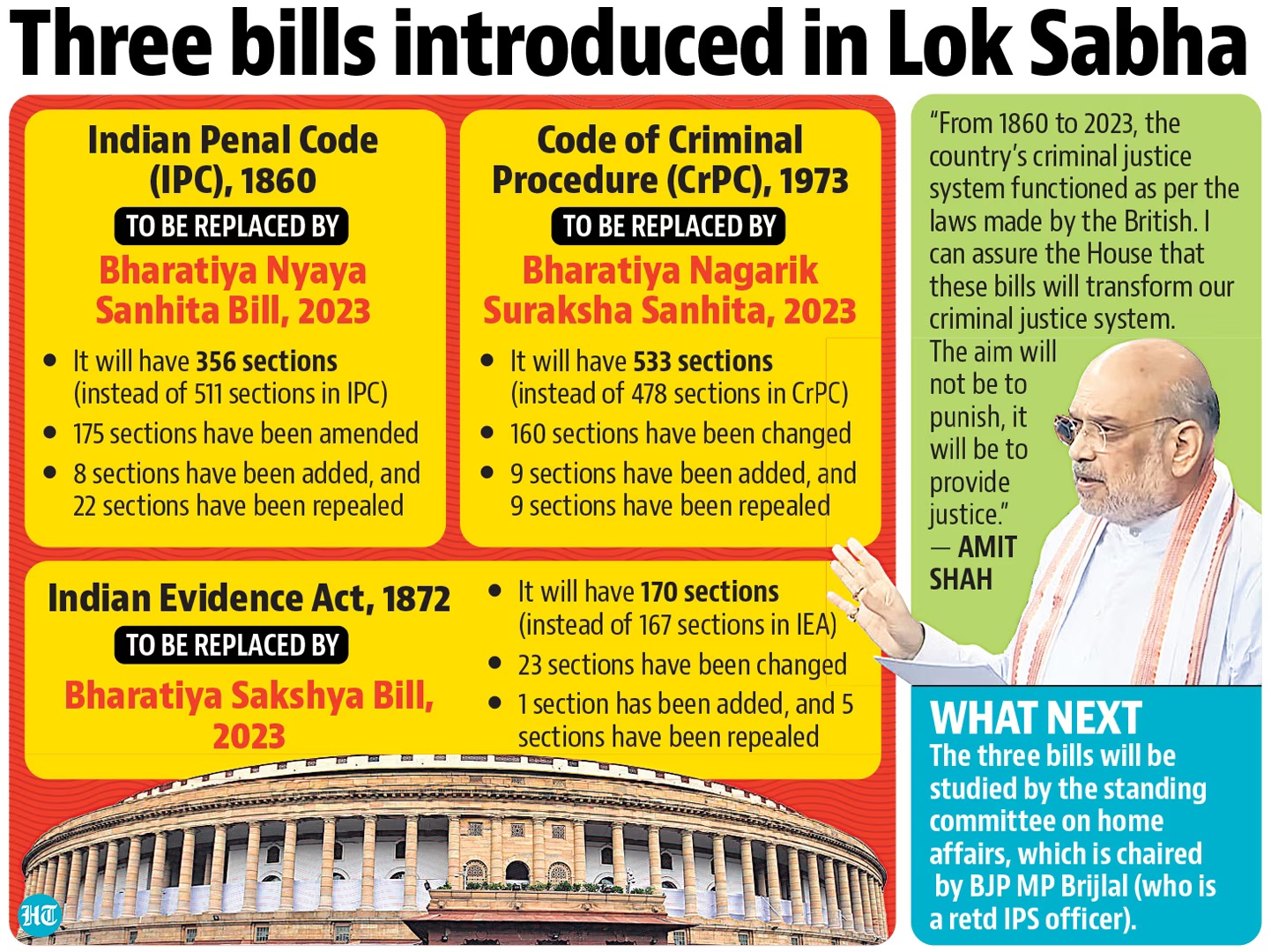
Central Idea:
- The article explores challenges to the credibility of the rule of law, emphasizing the delicate balance between traditional norms and modern adaptations.
- Recent legal reforms in India, particularly the Jan Vishwas Act, are discussed, along with concerns about potential abuses of power through shortcuts in law enforcement.
Key Highlights:
- The article underscores the significance of faith in the inherent goodness of legal norms for trust in the rule of law.
- Discussion on the Jan Vishwas Act addressing outdated laws to facilitate business activities and reduce compliance burdens.
- Replacement of colonial-era laws with the Bharatiya Nyaya (Second) Sanhita to modernize legal thinking and rebuild credibility.
- The credibility crisis is attributed to shifts in perceptions of law as a power resource and the adoption of shortcut methods in law enforcement.
Key Challenges:
- Potential misuse of power through encounters and ‘bulldozer’ methods without democratic checks and balances.
- Concerns about the crude nature of an abridged rule of law, leading to arbitrary justice and unpredictability.
Key Terms:
- Jan Vishwas Act
- Bharatiya Nyaya (Second) Sanhita
- Credibility crisis
- Shortcut or abridged rule of law model
Key Phrases:
- “Normative raison d’etre” – referring to the fundamental basis or justification of norms.
- “Smart governance” – addressing infirmities and outdatedness in laws through effective governance.
- “Encounter killings” and “bulldozer action” – methods of law enforcement discussed in the article.
Key Quotes:
- “Fear of imprisonment for minor offences is a major factor hampering the growth of the business ecosystem.”
- “The real credibility crisis of the rule of law is located not so much at the normative level but at the level of the rule of law reality.”
Key Statements:
- Acknowledgment of the government’s faith in the traditional rule of law as a positive aspect.
- Highlighting the dangers of growing reliance on shortcut or abridged rule of law models.
Key Examples and References:
- The Dandi March as an example of civil disobedience against an unjust law.
- Instances of police encounters and ‘bulldozer’ actions leading to potential abuses of power.
Key Facts:
- The Jan Vishwas Act addressed changes in numerous central Acts, including the Indian Post Office Act, and the Cinematograph Act.
- Replacement of colonial-era Indian Penal Code, Code of Criminal Procedure, and Indian Evidence Act in the second phase.
Critical Analysis:
- The article critically examines the evolving landscape of the rule of law, highlighting potential challenges and consequences of shortcut methods in law enforcement. It questions the credibility crisis and emphasizes the importance of maintaining faith in traditional norms.
Way Forward:
- The article suggests staying alert to the dangers of shortcut or abridged rule of law models.
- Encouragement to continue faith in the traditional rule of law while acknowledging the need for necessary reforms.
Get an IAS/IPS ranker as your 1: 1 personal mentor for UPSC 2024
Attend Now
Note4Students
From UPSC perspective, the following things are important :
Prelims level: Jan Vishwas Bill 2.0
Mains level: Jan Vishwas Bill 2.0

Central Idea:
The article delves into the repercussions of excessive jail provisions in Indian laws, particularly those affecting employers, advocating for the Jan Vishwas Bill Version 2.0 as a viable solution. The focus is on transitioning from a retail approach to a wholesale strategy for filtering out unnecessary criminal provisions, aiming to curb corruption, foster good job creation, and alleviate the judicial system’s burden.
Key Highlights:
- Jan Vishwas Bill 1.0 successfully eliminated 113 jail provisions across 23 laws, alleviating corruption demands on employers.
- Labor laws, notably the Factories Act, contain a significant number of imprisonment clauses, impeding high-productivity enterprises.
- The article suggests transitioning from a retail to a wholesale filtering approach for decriminalization, involving a government committee to identify criteria justifying jail provisions.
- Decriminalization is shown to ease the judicial system’s load, exemplified by the Ministry of Company Affairs’ actions outside the Jan Vishwas Bill.
- Excessive regulatory cholesterol, resulting from numerous compliances and filings, obstructs the growth of productive and compliant employers.
Key Challenges:
- Resistance to change from institutions defending the status quo.
- Balancing the need for compliance without stifling entrepreneurship.
- The complexity of labor laws and other regulations, making it challenging to identify and eliminate unnecessary jail provisions.
Key Terms:
- Jan Vishwas Bill: Legislation aimed at reducing corruption demands on employers by eliminating unnecessary jail provisions.
- Regulatory cholesterol: Excessive regulatory burden hindering productivity and compliance.
- Decriminalization: The process of removing criminal penalties from certain offenses.
Key Phrases:
- “Retail to wholesale filtering”: Shifting the strategy from individual ministries volunteering for change to a positive list approach for decriminalization.
- “Regulatory arbitrage”: Corruption resulting from the subjective interpretation and enforcement of laws.
- “Civil service reform”: Advocating for changes in the civil service to address the root cause of regulatory issues.
Key Quotes:
- “Show me the person, and I’ll show you the crime.” – Lavrentiy Beria, highlighting the selective use of imprisonment clauses for corruption.
- “The most sustainable reform for keeping regulatory cholesterol low is civil service reform.” – Emphasizing the need for changes in the civil service to address regulatory issues.
Key Statements:
- “The most sustainable reform for keeping regulatory cholesterol low is civil service reform.”
- “Excessive regulatory cholesterol currently hurts productive and compliant employers.”
Key Examples and References:
- Mention of the Jan Vishwas Bill Version 1.0 and its success in eliminating 113 jail provisions.
- Reference to the Ministry of Company Affairs’ decriminalization efforts outside the Jan Vishwas Bill.
Key Facts and Data:
- Over 25,000 employer jail provisions, with 5,000 arising from central legislation.
- The Ministry of Company Affairs decriminalized over four dozen violations, leading to increased orders issued by the Registrar of Companies.
Critical Analysis:
The article emphasizes the need for a comprehensive strategy to address the issue of excessive jail provisions in Indian laws. It identifies labor laws and other regulations as major contributors to the problem and suggests that a wholesale approach to decriminalization, guided by a government committee, would be more effective. The author contends that reducing regulatory cholesterol is crucial for fostering a conducive environment for job creation and economic growth.
Way Forward:
- Implement Jan Vishwas Bill 2.0 with a focus on wholesale filtering for decriminalization.
- Establish a government committee with cognitive diversity to identify criteria justifying jail provisions for employers.
- Encourage collaboration between central ministries to remove unnecessary jail provisions that do not meet the committee’s criteria.
- Emphasize the importance of civil service reform for long-term sustainability in reducing regulatory cholesterol.
- Monitor and assess the impact of the Jan Vishwas Bill 2.0 on corruption, job creation, and the judicial system to ensure effectiveness.
Get an IAS/IPS ranker as your 1: 1 personal mentor for UPSC 2024
Attend Now
Note4Students
From UPSC perspective, the following things are important :
Prelims level: Alternative dispute resolution
Mains level: disability rights
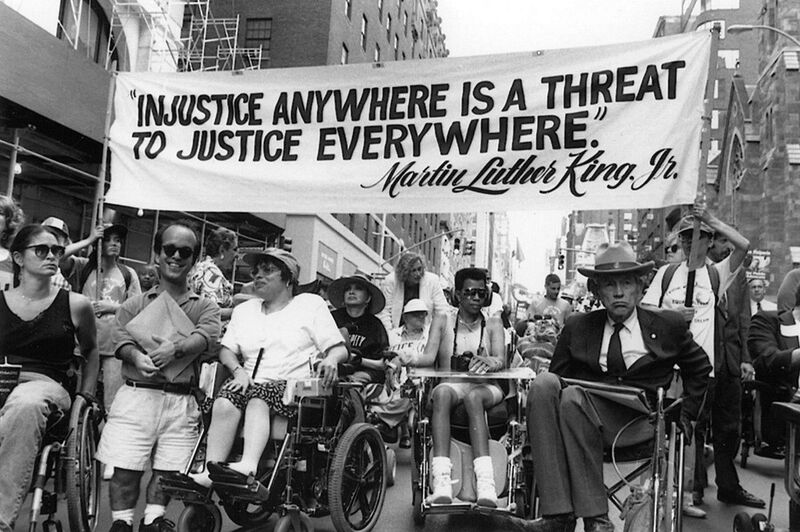
Central Idea:
Structured negotiation is an effective and collaborative approach for resolving disputes, particularly in disability rights cases. It emphasizes a win-win situation where defaulting service providers avoid the drawbacks of litigation, and complainants achieve barrier-free access to services.
Key Highlights:
- Success in addressing issues like inaccessible ATMs, point of sale devices, and websites.
- Convincing major companies like Walmart, CVS, and Caremark to create accessible prescription bottles.
- Driving institutional reform for more accessible voting machines and websites.
- Win-win situation: Service providers avoid litigation costs, complainants gain accessible services.
- Relies on a strong body of disabled-friendly legal precedents for success.
Key Challenges:
- Red tape and bureaucracy in Indian civil courts dissuading traditional dispute resolution methods.
- PayTM incident highlights the challenge of real-time accessibility and constant vigilance.
- Success depends on the willingness of service providers to prioritize the needs of persons with disabilities.
Key Terms:
- Structured negotiation
- Disability rights, Litigation
- Accessibility
- Compliance
- Win-win situation
- PayTM
- Alternative dispute resolution
Key Phrases:
- “Win-win situation”
- “Barrier-free participation in the marketplace”
- “Constant vigilance and user inputs”
- “Level of priority from service providers”
- “Enormous buying capacity of persons with disabilities”
Key Quotes:
- “Optimism is the faith that leads to achievement.” – Helen Keller
Key Statements:
- Structured negotiation offers a pathway for businesses to ensure accessibility without litigation.
- Red tape in Indian civil courts poses a challenge to traditional dispute resolution.
Key Examples and References:
- Walmart, CVS, and Caremark creating accessible prescription bottles.
- CCPD directing PayTM to make its mobile applications accessible.
Key Facts:
- Success in addressing issues related to ATMs, point of sale devices, and websites.
- PayTM incident revealing challenges in real-time accessibility.
Critical Analysis:
Structured negotiation’s success relies on creating a strong foundation of disabled-friendly legal precedents. The challenges of bureaucracy and the need for constant vigilance in real-time accessibility highlight the potential limitations. The willingness of service providers to prioritize persons with disabilities is crucial for the model’s effectiveness.
Way Forward:
Businesses in India should prioritize the needs of disabled users and consider structured negotiation as a powerful step. The enormous buying capacity of persons with disabilities should be recognized, urging businesses to embrace accessibility for both legal compliance and economic benefits.
Get an IAS/IPS ranker as your 1: 1 personal mentor for UPSC 2024
Attend Now
Note4Students
From UPSC perspective, the following things are important :
Prelims level: Directorate General of Civil Aviation (DGCA)
Mains level: Implement stringent safety reporting and accountability measures in the Indian aviation industry.
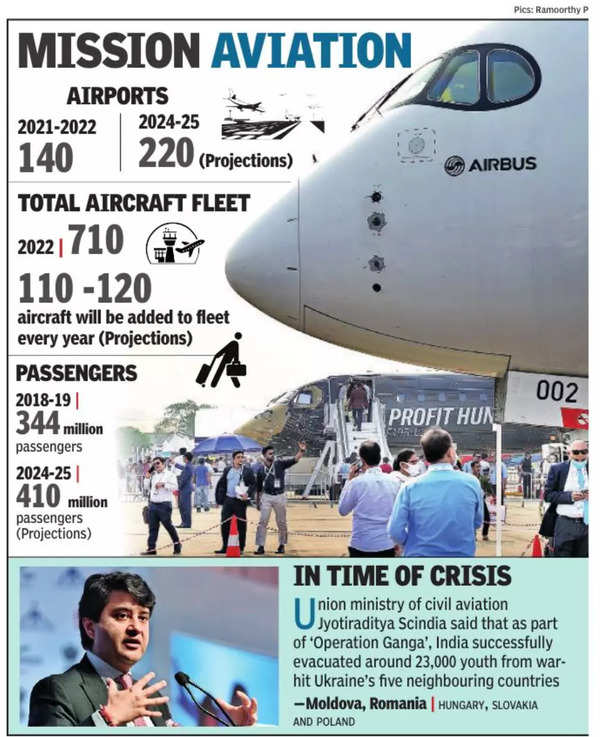
Central Idea:
The article discusses the recent aviation accident at Tokyo’s Haneda airport involving a Japan Airlines (JAL) Airbus A350 and a Japanese Coast Guard Bombardier Dash 8. It highlights the disciplined evacuation and professionalism displayed by JAL’s crew, contrasting it with incidents where passengers’ lack of discipline during emergencies led to safety concerns. The author also points out flaws in training and safety reporting within the Indian aviation industry, focusing on a recent hard landing incident involving an Air India Airbus.
Key Highlights:
- The Tokyo aviation accident as an example of Murphy’s law.
- Disciplined evacuation by JAL crew saved lives.
- Comparison with incidents of passenger indiscipline during emergencies.
- Flaws in reporting and handling safety incidents in Indian aviation.
- The importance of crew training and adherence to safety procedures.
Key Challenges:
- Lack of discipline among passengers during emergencies.
- Flaws in training and safety reporting within the Indian aviation industry.
- History of covering up serious incidents and accidents in Air India.
- Need for proactive action and accountability in the face of safety concerns.

Key Terms:
- Notice to airmen (NOTAM)
- Aviation Safety Adviser
- Directorate General of Civil Aviation (DGCA)
- Simulator proficiency check
- Emergency evacuation procedures
- Hard landing
- Aircraft type conversion
Key Phrases:
- “If there is a possibility of several things going wrong, the one that will cause the most damage will be the one to go wrong.”
- “High professional standards in JAL’s training of its crew.”
- “A disturbing fact is the failure of the Air India management to act proactively.”
- “The hard landing accident at Dubai should serve as a wake-up call for the airline.”
Key Quotes:
- “The world witnessed the highest quality of discipline and crew training.”
- “Many questions will be raised, and we will not have any reasonable answers.”
- “Merely stating that safety is paramount when so many incidents are being swept under the carpet will not improve the reputation of the airline.”
Key Statements:
- The disciplined evacuation from the JAL aircraft showcased the importance of crew training and adherence to safety procedures.
- Flaws in training and safety reporting in the Indian aviation industry, especially in incidents like the hard landing at Dubai, raise concerns about passenger safety.
Key Examples and References:
- Tokyo aviation accident involving JAL Airbus A350 and Coast Guard Dash 8.
- Air France flight AF 358 overshooting runway incident.
- Emirates flight EK 521 crash incident with passenger indiscipline.
- Air India’s history of covering up incidents, including the recent hard landing at Dubai.
- Indian Airlines Airbus crash in Bangalore in 1990 and TAM Airlines Airbus crash in Sao Paulo in 2007.
Key Facts:
- All 379 passengers on the JAL plane in the Tokyo incident escaped, with five fatalities on the smaller aircraft.
- Aircraft manufacturers must demonstrate complete evacuation within 90 seconds in maximum density configuration.
- The hard landing by an Air India Airbus in Dubai involved a 3.5g impact, posing serious risks.
Critical Analysis:
The article critically examines the disciplined response of JAL’s crew in contrast to incidents of passenger indiscipline during emergencies. It sheds light on the flaws in training and safety reporting within the Indian aviation industry, emphasizing the need for accountability and proactive measures. The historical context of accidents caused by confusion in flying different aircraft types is highlighted, urging the industry to focus on standards and crew proficiency.
Way Forward:
- Implement stringent safety reporting and accountability measures in the Indian aviation industry.
- Emphasize crew training and adherence to safety procedures, learning from incidents like the Tokyo aviation accident.
- Ensure transparency in reporting and addressing safety concerns to improve the reputation of airlines.
- Evaluate crew selection criteria for new aircraft types, prioritizing proficiency and experience over seniority.
- Collaborate with international aviation standards to enhance overall safety in the industry.
Get an IAS/IPS ranker as your 1: 1 personal mentor for UPSC 2024
Attend Now
Note4Students
From UPSC perspective, the following things are important :
Prelims level: Jan Vishwas Bill 2023
Mains level: The impact of voice votes, the Anti-Defection Law, and the dismissal of division calls on legislative transparency and accountability
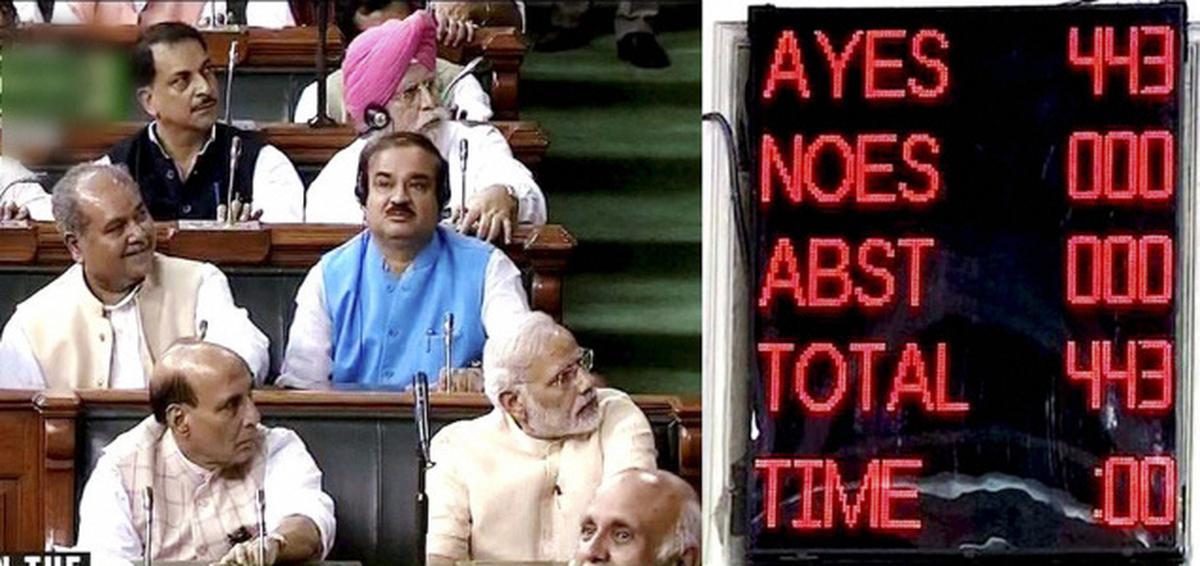
Central Idea:
The article discusses the absence of voting records during the recent Parliament session, highlighting the significance of recorded votes in representing legislators’ stances and fostering transparency in the legislative process. It also explores the impact of the Anti-Defection Law on MPs’ dissent and the increasing use of voice votes, leading to a lack of accountability.
Key Highlights:
- 19 bills were passed in the recent Parliament session, but voting records were not made available.
- The use of voice votes, lacking individual records, is a preferred method for passing legislative motions.
- The Anti-Defection Law has limited MPs’ ability to dissent, reducing the significance of debates and votes.
- The scarcity of voting records hampers Opposition parties in communicating their positions to the electorate.
Key Challenges:
- Lack of transparency due to the absence of voting records.
- The impact of the Anti-Defection Law on MPs’ freedom to dissent.
- Dismissal of division calls during crucial legislative moments.
Key Terms:
- Voice vote
- Anti-Defection Law
- Division call
- Legislative transparency
- Accountability
- Dissent
Key Phrases:
- “A shadow of opacity has fallen over our legislative processes.”
- “The scarcity of voting records can be a symptom of a deeper problem.”
- “The impact of the Anti-Defection Law on MPs’ dissent is a matter of concern.”
Key Quotes:
- “Transparency defines the measure to which our parliamentarians’ political decisions are traceable, which begets accountability.”
- “The right to a division, meant to be readily available, has become shrouded in subjective judgement.”
Key Examples and References:
- The passage of the Jan Vishwas Bill 2023 and the farm bills through voice votes.
- Asaduddin Owaisi’s dissent on various bills, illustrating the importance of voting records.
- Dismissal of division calls during the passage of the Weapons of Mass Destruction Bill and the Electricity Amendment Bill.
Key Facts:
- In Modi I, 40 divisions were raised for 180 bills, while in Modi II, only 20 divisions were allowed for 209 bills.
- Only 15.4% of bills in the BJP’s 10-year tenure have voting records.
Critical Analysis:
The article critically examines the impact of voice votes, the Anti-Defection Law, and the dismissal of division calls on legislative transparency and accountability. It emphasizes the need for voting records to ensure a clear representation of MPs’ stances.
Way Forward:
- Reevaluate the impact of the Anti-Defection Law on MPs’ dissent.
- Ensure the availability of voting records to enhance legislative transparency.
- Address the dismissal of division calls to uphold the right to record votes.
- Promote a more accountable and transparent legislative process through recorded votes.
In essence, the article advocates for the restoration of transparency in the legislative process through the provision of voting records and a reconsideration of the Anti-Defection Law’s impact on MPs’ dissent.
Get an IAS/IPS ranker as your 1: 1 personal mentor for UPSC 2024
Attend Now
Note4Students
From UPSC perspective, the following things are important :
Prelims level: Corbett Tiger Reserve (CTR)
Mains level: Complexity of human-wildlife conflicts

Central Idea:
The article highlights the success of Corbett Tiger Reserve (CTR) in India in managing and conserving its tiger population, emphasizing the importance of a balanced approach involving wildlife protection, community engagement, and ecological sustainability.
Key Highlights:
- CTR, spanning 1288.31 sq.km, has shown significant progress in tiger conservation, recording the highest density of wild tigers globally, from 231 to 260 in four years.
- The richly-forested, highly-biodiverse landscape attracts various enthusiasts and researchers.
- The article acknowledges the unsung heroes among the forest staff and local communities who contribute to the reserve’s ecosystem.
- Grassland and water management practices, strategic wildlife corridors, and addressing human-wildlife conflicts are vital aspects of CTR’s holistic approach.
Key Challenges:
- Human-wildlife conflicts, particularly with tigers and elephants, pose a formidable challenge.
- Ensuring the safety and security of the forest staff, who face risks while patrolling the reserve.
- Balancing the economic dependence of local communities on tiger-related tourism with the risks posed by wild animals.
Key Terms:
- Tiger Conservation Plan
- Core and buffer zones
- Biodiversity
- Grassland management
- Wildlife corridors
- Human-wildlife conflict
- Eco Development Committees (EDCs)
Key Phrases:
- “An unforgettable sight: the dread and danger lurking in the treacherous gaze of a stalking tiger.”
- “A delicate balance of forest flora and fauna is crucial for a healthy forest ecology.”
- “The rising incidence of human-elephant and tiger-human conflict poses a formidable challenge.”
- “Living with Tigers initiative aims at creating awareness and behavioral changes among local communities.”
Key Quotes:
- “A glimpse of the peerless king of the jungle in all his majesty is truly captivating.”
- “The only way ahead is by enjoining forest conservation upon all local stakeholders.”
- “The revival of the tiger since 1973 has meant a cultural renaissance and revival of our conservation ethics and values.”
Key Examples and References:
- The success of the beehive-fencing project to guard crops against wild elephants.
- The “Living with Tigers” initiative promoting awareness and behavioral changes among school children and villagers.
- The economic dependence of Ramnagar district on tiger-related tourism.
Key Facts:
- CTR covers 1288.31 sq.km and recorded 260 tigers in 2022.
- 27 different kinds of grasslands are present at CTR.
- The beehive-fencing project resulted in the creation of “Corbee Honey,” managed by local Eco Development Committees.
Critical Analysis:
The article acknowledges the complexity of human-wildlife conflicts as “wicked problems,” requiring unique solutions. It emphasizes the need for a collaborative, engaging, and socio-culturally-sensitive approach in addressing conservation challenges.
Way Forward:
- Continue efforts to balance economic benefits of tiger-related tourism with wildlife conservation.
- Scale up successful initiatives like the beehive-fencing project and “Living with Tigers” awareness program.
- Strengthen community engagement for long-term conservation efforts.
- Promote sustainable practices for wildlife protection, grassland management, and water conservation.
In essence, the article underscores the success of CTR in tiger conservation and the imperative of a comprehensive approach involving ecological sustainability, community engagement, and innovative solutions to address ongoing challenges.
Get an IAS/IPS ranker as your 1: 1 personal mentor for UPSC 2024
Attend Now
Note4Students
From UPSC perspective, the following things are important :
Prelims level: Na
Mains level: critical examination of the challenges in the current education system

Central Idea:
The article discusses the challenges and inadequacies in the current examination systems of educational institutions in India. It emphasizes the need for transparency, oversight, and credibility in assessments to ensure that degrees and certificates truly reflect students’ learning achievements.
Key Highlights:
- Credibility of the examination system is crucial for maintaining educational standards.
- Decentralized systems in India with numerous universities and boards face challenges in maintaining transparency and standardization.
- The article criticizes the focus on memory-based testing, inflation of marks, and a lack of emphasis on higher-order thinking skills.
- Employers often rely on their own assessments rather than institutional certifications.
- The article suggests the use of technology, external audits, and adherence to minimum standards to improve assessment processes.
Key Challenges:
- Lack of transparency and oversight in examination processes.
- Inconsistency and inadequacies in syllabi and teaching methods.
- Confidentiality leading to malpractices and scandals in examinations.
- The need for balancing autonomy with proper oversight in educational institutions.
- Negligence, fraud, and quality issues in assessment processes.
Key Terms:
- Decentralized system
- Transparency
- Oversight
- Standardization
- Higher-order thinking
- Autonomy
- External audit
- Credibility
- Minimum standards
- Technology in assessment
Key Phrases:
- “Credibility of assessment and standard of education can be ensured only through transparency in teaching and assessment.”
- “Inconsistency of the examination system is cause for concern.”
- “Confidentiality is also a cause for scandals in examinations.”
- “Transparency and proper oversight take lead roles in the examination systems.”
Key Quotes:
- “A credible examination system is one of the key ways to improve the standard of education.”
- “The employability of a graduate depends on higher order learning, while examination boards do not certify students on those skills.”
- “The higher education regulator truly believes in decentralization through autonomous institutions without oversight.”
Key Examples and References:
- Instances of question papers with language errors, conceptualization issues, and irrelevant questions.
- Employers disregarding institutional certifications in favor of their own assessments.
- The coaching market for competitive examinations and skilling due to a lack of faith in institutional certifications.
Key Facts:
- India has over 1,100 universities, 50,000 affiliated colleges, and 60 school boards.
- Total enrollment in higher education is 40.15 million students.
- Employers conduct rigorous assessments of candidates’ academic achievements and suitability for employment.
Critical Analysis:
The article provides a critical examination of the challenges in the current education system, emphasizing the need for transparency, oversight, and credibility. It highlights the disconnect between institutional certifications and actual learning outcomes, calling for a shift towards higher-order thinking skills.
Way Forward:
- Emphasize transparency in teaching and assessment processes.
- Implement external audits of assessment systems to ensure reliability and consistency.
- Balance autonomy with proper oversight in educational institutions.
- Use technology to standardize question paper setting and evaluation processes.
- Codify and address issues of negligence, fraud, and academic inadequacies in assessments.
- Release audit reports regularly to assess examination boards in terms of transparency, reliability, and consistency.
Get an IAS/IPS ranker as your 1: 1 personal mentor for UPSC 2024
Attend Now
Note4Students
From UPSC perspective, the following things are important :
Prelims level: Lethal autonomous weapons systems
Mains level: Rise of "digital sovereignty"

Central Idea:
- The global landscape witnesses a complex interplay of power dynamics in AI and frontier technologies. Efforts by international bodies like the United Nations set ethical frameworks for responsible AI development.
Key Highlights:
- UN initiatives on AI governance and ethical principles.
- Rise of “digital sovereignty” challenging traditional notions of territorial sovereignty.
- Emergence of contrasting “digital empires,” with the US favoring a free market approach and China leaning towards state-driven regulation.
- Concerns about China’s regulatory model spreading globally due to its technological success and political control.
- The EU advocating for a human rights-based approach to AI development.
Key Challenges:
- Threats to privacy and democracy due to the manipulation of personal information by AI tools.
- Tension between the free market approach and authoritarian regulatory models.
- Potential dominance of China’s oppressive regulatory model in the global AI landscape.
Key Terms:
- Digital sovereignty
- Techno-optimism
- Authoritarian regulatory model
- Surveillance capitalism
- Lethal autonomous weapons systems (LAWs)
Key Phrases:
- “Digital sovereignty” transforming territorial sovereignty.
- “Digital empires” in complicity and collision.
- “Techno-optimism run wild” leading to an appeal for authoritarian regulatory reach.
- “Surveillance capitalism” and “digital authoritarianism” shaping the uncertain future of the technopolitical.
Key Quotes:
- “Privacy, anonymity, and autonomy remain the main casualties of AI’s ability to manipulate choices.”
- “China’s regulatory model will prevail, normatively and descriptively.”
- “Whether surveillance capitalism, digital authoritarianism, or liberal democratic values will prevail remains uncertain.”
Key Examples and References:
- UNICEF hosting a joint session on AI governance.
- The US and China as contrasting digital empires.
- EU Declaration on Development advocating a human rights-based approach.
Key Facts:
- Social media industry growth from $193.52 billion in 2001 to $231.1 billion in 2023.
- Concerns about the impact of China’s technological success combined with political control on global AI governance.
Way Forward:
- Continued efforts to humanize AI applications in civil and military contexts.
- Global collaboration to establish norms and frameworks for responsible AI development.
- Vigilance against the potential spread of oppressive regulatory models, emphasizing human rights and inclusivity.
Get an IAS/IPS ranker as your 1: 1 personal mentor for UPSC 2024
Attend Now
Note4Students
From UPSC perspective, the following things are important :
Prelims level: 74th Constitutional Amendment
Mains level: The Kerala Urban Commission

Central Idea:
- The article discusses the formation of the Kerala Urban Commission in the context of global urbanization trends and the need for a comprehensive approach to urban development.
- It highlights the challenges faced by urban areas in India and emphasizes the significance of revisiting and re-evaluating urban policies.
Key Highlights:
- The article reflects on the historical development phases of urbanization in post-independent India, noting the failures of both Nehruvian centralized planning and the subsequent privatization trends in the 1990s.
- It underscores the necessity of understanding objective patterns of urbanization, focusing on migration, settlement patterns, and the role of information technology.
- Governance issues in cities, such as delayed transfer of subjects to municipalities and the debate on having managers instead of elected officials, are highlighted.
- The article suggests that existing urban missions, like Swachh Bharat and Smart Cities, have failed to produce desired results and may continue to do so.
Key Challenges:
- Piecemeal approaches to urban development are criticized for their failure to address the complex realities of urbanization.
- Governance issues, including the delay in transferring subjects to municipalities and the debate on city affairs management, pose challenges to effective urban governance.
- The article suggests that existing urban missions, like Swachh Bharat and Smart Cities, have failed to produce desired results and may continue to do so.
Key Terms:
- Urban Commission: Refers to the proposed or existing bodies tasked with addressing the challenges and complexities of urban development.
- Urbanization: The process of population migration from rural to urban areas, leading to the growth and development of cities.
- Nehruvian Period: Refers to the development era influenced by Jawaharlal Nehru’s centralized planning approach.
- Privatization: The transfer of control or ownership of public services or assets to private entities.
- Fifteenth Finance Commission: A reference to the commission responsible for recommending the distribution of financial resources between the central and state governments.
Key Phrases:
- “Holistic city approach”: Refers to a comprehensive and integrated strategy for urban development.
- “Engines of growth”: Describes the shift in cities’ perception from spaces of enlightenment to centers focused on economic development.
- “Mission mode of development”: Refers to project-oriented approaches like the Jawaharlal Nehru National Urban Renewal Mission and Smart Cities Mission.
- “Complex processes unfolding”: Highlights the intricate nature of governance and financial structures in urban areas.
Key Quotes:
- “Cities were made competitive and termed as ‘engines of growth’ — not spaces of enlightenment, future of dreams, and habitat.”
- “The urbanisation process cannot be reduced to some mission approaches…”
- “Kerala Urban Commission can be the lighthouse for other States…”
Key Statements:
- “An urban commission is required at the national and State levels to understand some of the interesting objective patterns of urbanisation.”
- “The period of the 1990s is the one where the abject privatization of cities began…”

Key Examples and References:
- Mention of the National Commission on Urbanisation formed by Rajiv Gandhi and its recommendations.
- Reference to global urbanization trends, including the impact on climate change and unequal city spaces.
- Examples of failed urban missions like Swachh Bharat and Smart Cities.
Key Facts:
- More than half of the world’s population (56%) currently lives in cities.
- Kerala’s urbanized population is estimated to be around 90%.
- The Nehruvian period witnessed the construction of around 150 new towns with a centralized planning approach.
Key Data:
- The 74th Constitutional Amendment marked a shift towards more private initiative and investment in urban development.
- The Kerala Urban Commission has a 12-month mandate to address urbanization challenges and lay a roadmap for 25 years of urban development.
Critical Analysis:
- The article critically examines the historical phases of urban development in India and highlights the shortcomings of past approaches.
- It questions the effectiveness of existing urban missions and emphasizes the need for a holistic understanding of urbanization processes.
- Governance issues and financial centralization are critically discussed as impediments to successful urban development.
Way Forward:
- The article suggests that the formation of the Kerala Urban Commission could serve as a model for other highly urbanized states.
- It advocates for a comprehensive and objective approach to urban development, emphasizing the importance of addressing challenges such as migration, settlement patterns, and information technology.
- The need for revisiting and relooking at urban policies is underscored for a more successful and sustainable urban future.
Get an IAS/IPS ranker as your 1: 1 personal mentor for UPSC 2024
Attend Now
Note4Students
From UPSC perspective, the following things are important :
Prelims level: Foreign Contribution Regulation Act
Mains level: state's tactics to limit civic space, affecting organizations fighting against communalism

Central Idea:
- The article discusses the threats faced by India’s civic space, particularly organizations fighting against communalism. Emphasizes the importance of protecting constitutional freedoms.
Key Highlights:
- Constitutional freedoms are under siege in India’s diverse and vibrant civil society.
- Organizations actively fighting communalism are facing severe attacks, affecting their funding and leadership.
- The state employs various instruments, including legal charges, amendments to laws, and tax-related measures, to curb civic space.
- Impact is significant on organizations supporting minority, Dalit, Adivasi rights, and equity promotion.
Key Challenges:
- High-intensity attacks leading to financial constraints and imprisonment for leaders of certain NGOs.
- Shrinking civic space even for neutral or non-communal organizations.
- Utilization of legal instruments like money laundering charges and investigations to intimidate NGOs.
- Amendments to laws, such as the FCRA, restricting access to foreign funds for NGOs.
- Intimidation of domestic donors through tax-related provisions.
Key Terms/Phrases:
- Civic space
- Constitutional freedoms
- Anti-communal
- NGOs (Non-Governmental Organizations)
- FCRA (Foreign Contribution Regulation Act)
- Money laundering charges
- Civic mobilization
- Secularism
- Adivasi rights
- Human rights causes
Key Quotes/Statements:
- “The last bastion and ray of hope for India’s democracy is its civic space.”
- “The scale of attack on organizations actively fighting against communalism is alarming.”
- “The state employs a range of instruments to limit the civic space of various organizations.”
Key Examples and References:
- Amnesty International, Centre for Equity Studies, Citizens for Justice and Peace, among others, facing severe attacks.
- Greenpeace transitioning from high-intensity attacks to a lower level.
Key Facts/Data:
- Amendments to the FCRA in 2010 and 2020 impacted around 18,000 NGOs between 2015 and 2022.
- The 2020 amendments to the Income-Tax Act make renewals of NGO certificates mandatory every five years.
- The Central Bureau of Investigation (CBI) is empowered to investigate NGOs under the FCRA.
Critical Analysis:
- The article presents a critical analysis of the state’s tactics to limit civic space, affecting organizations fighting against communalism.
- It highlights the severity of attacks and the broader impact on democratic values.
Way Forward:
- Strengthening opposition and regional leaders who take a clear secular position.
- Mobilizing anti-communal and progressive civic space to safeguard democracy.
- Advocating for the protection of constitutional freedoms and reviewing stringent laws impacting NGOs.
- Raising awareness about the importance of civic space in preserving India’s democracy.
Get an IAS/IPS ranker as your 1: 1 personal mentor for UPSC 2024
Attend Now
Note4Students
From UPSC perspective, the following things are important :
Prelims level: The World Health Organization's report on global disparities in blood collection.
Mains level: public-private partnerships to improve blood collection and distribution
Get an IAS/IPS ranker as your 1: 1 personal mentor for UPSC 2024
Attend Now

















